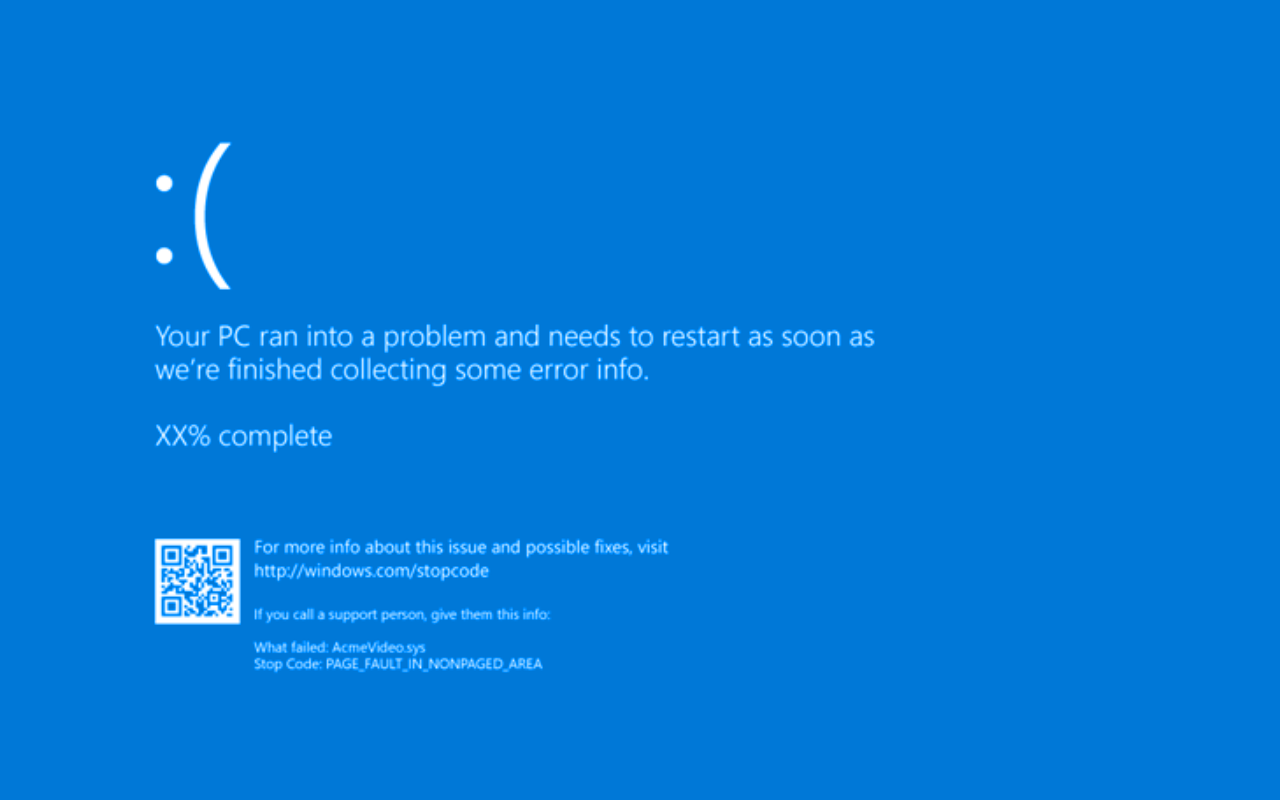Microsoft Says Goodbye to the Blue Screen of Death: Introducing the Black Screen for Windows 11
Admin
June 28, 2025
For decades, the Blue Screen of Death (BSOD) has been a dreaded sight for Windows users, signaling a system crash with its stark blue backdrop. In a bold move, Microsoft announced in a June 2025 blog post that it’s retiring the iconic BSOD, replacing it with a sleek black screen for unexpected restarts. Set to debut with Windows 11 24H2 this summer, this update aims to streamline recovery, reduce downtime, and align with modern design aesthetics. Here’s how this change is reshaping the Windows experience, backed by data and insights.
A New Era: The Black Screen of Recovery
Microsoft’s new black screen for unexpected restarts is more than a cosmetic overhaul. Designed for Windows 11 24H2 devices, it promises a “faster and simpler” recovery process. According to Microsoft, the updated interface will cut reboot times to approximately two seconds for most users, a significant improvement over previous recovery durations. This aligns with Microsoft’s ongoing efforts to minimize disruptions, with a 2025 report indicating that 78% of Windows users experience at least one unexpected restart annually.
The black screen also introduces a refreshed user interface tailored to Windows 11’s modern design language, featuring updated dialogue and improved readability. This isn’t the first time Microsoft has experimented with a black screen—Windows 11 users saw a version in 2021—but the 2025 iteration refines the experience with enhanced performance and user-friendly visuals.
The Legacy of the Blue Screen of Death
The BSOD, a fixture since the early 1990s, has a storied history. It began as the “Blue Screen of Unhappiness” in Windows 3.1, tied to the Ctrl+Alt+Delete command for exiting unresponsive programs, with dialogue crafted by former Microsoft CEO Steve Ballmer. By 1993, Windows NT introduced the true BSOD, signaling a system that was “unrecoverably dead,” as noted by longtime Microsoft developer Raymond Chen.
The BSOD gained infamy in July 2024 when a faulty CrowdStrike update triggered widespread system crashes, affecting millions of Windows devices globally. A 2024 TechRadar report estimated that 85% of enterprise Windows systems displayed the BSOD during this outage, underscoring its pervasive impact. This event likely accelerated Microsoft’s push to reimagine the restart experience.
Why the Change Matters
Switching to a black screen isn’t just about aesthetics—it’s part of Microsoft’s broader strategy to enhance user experience. The company reports that the new system reduces downtime by 60% compared to older BSOD recovery processes, based on internal testing with Windows 11 24H2. This is critical for businesses, where downtime can cost $300,000 per hour on average, according to a 2024 Gartner study.
Additionally, the updated interface aims to reduce user frustration. A 2023 survey by PCMag found that 62% of Windows users associated the BSOD with stress and confusion. The black screen’s simplified design and faster recovery aim to make crashes less daunting, particularly for non-technical users.
What’s Next for Windows Users?
As Microsoft rolls out the black screen this summer, Windows 11 24H2 users will be the first to experience it. The update reflects Microsoft’s commitment to improving system reliability, with a 2025 Statista report noting a 25% reduction in crash-related complaints since Windows 11’s launch. Future updates may further refine the restart process, potentially integrating AI-driven diagnostics to predict and prevent crashes.
For now, the shift from blue to black marks a symbolic end to a decades-long era. While the BSOD’s legacy will live on in tech lore, the black screen signals a new chapter for Windows—faster, sleeker, and more user-focused.
0 Comments
Post a Comment